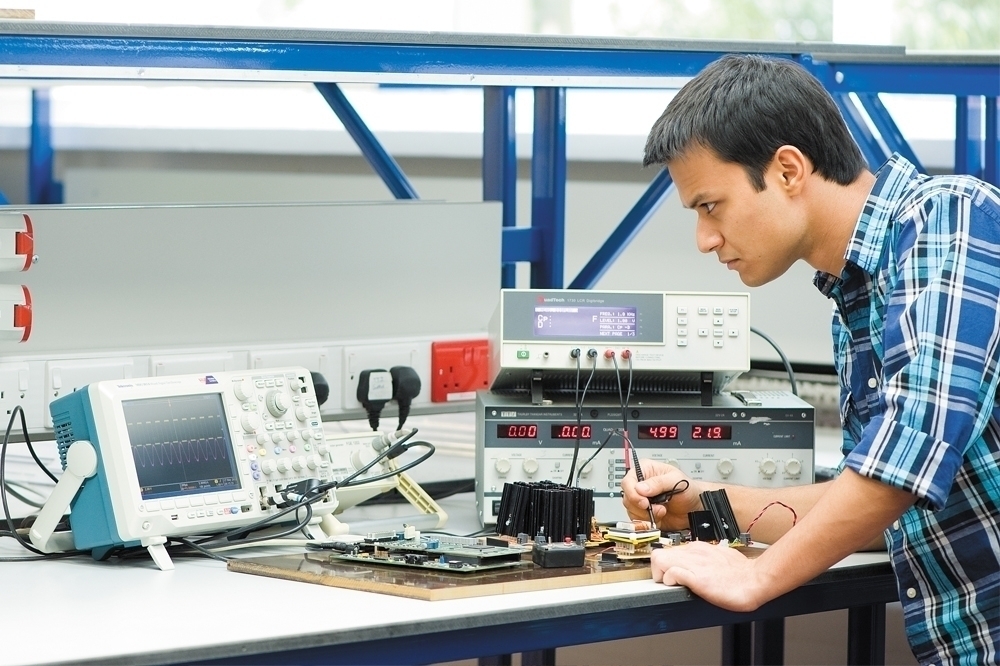Electronics and Communication Engineering Preparation

About Course
This Refresher Course helps aspiring candidates to recapitulate and improve their fundamental knowledge on various subjects pertaining to Electronics and Communication Engineering.
It covers the relevant topics under the academic curriculum for Graduate and Diploma level Engineering, where video lectures from world class institutions e.g. IITs, IISc etc. have been facilitated for dissemination of knowledge.
Course Content
Networks, Signals and Systems
-
Network Analysis
20:40 -
Introduction: KVL, KCL and Power Balance
29:44 -
Voltage and Current Sources
37:15 -
Simple Networks with Voltage and Current Sources
36:12 -
Mesh Analysis – I
39:10 -
Mesh Analysis – II
30:33 -
Nodal Analysis – I
34:50 -
Nodal Analysis – II
34:22 -
Nodal Analysis – III
31:41 -
Inductor – I
37:13 -
Initial Condition for Inductor
33:23 -
Energy Stored in Inductor with Example
32:15 -
R-L Series Circuit Analysis
32:49 -
Retrieving Energy or Discharging of Inductor Energy
39:42 -
Capacitor: Relationship of Voltage and Current and Initial Condition
34:05 -
Charging of a Capacitor – Voltage, Current and Energy During Charging
38:02 -
Discharge of a Charged Capacitor
34:57 -
Linearity of R, L, C – Inductor with Initial Current and Capacitor with Initial Voltage
34:39 -
General Method for Solving Linear Differential Equation – I
39:39 -
General Method for Solving Linear Differential Equation – II
34:00 -
General Method for Solving Linear Differential Equation – III
37:50 -
Problem Solving: Application
40:07 -
R – L Circuit with Sinusoidal Excitation
42:39 -
R – C Circuit with Sinusoidal Exponential
32:58 -
Solution Due to Exponential Forcing Function
47:15 -
Mesh and Nodal Analysis with Time Varying Source
32:06 -
Circuit Analysis with Phasor – I
34:46 -
Circuit Analysis with Phasor – II
29:57 -
Circuit Analysis with Phasor – III
39:44 -
Concept of Active and Reactive Power in A.C Circuit – I
32:52 -
Concept of Active and Reactive Power in A.C Circuit – II
35:35 -
Expression for Complex Power in A.C Circuit
34:28 -
Numerical Example
38:39 -
Mesh and Nodal Analysis in A.C Circuit, Introduction to Impulse Function
43:30 -
Odd and Even Functions, Relation between Unit Step and Impulse Function
49:02 -
Solution of Differential Equation with Impulse Excitation
35:25 -
Numerical Example when Excitation is Impulse
36:17 -
Self and Mutual Inductances – I
30:06 -
Dot Convention in Mutually Coupled Coils
33:19 -
Mutually Coupled Coils in Series and Parallel
34:59 -
Energy Stored in Mutually Coupled Coils
34:41 -
Steady State Response with Sinusoidal Excitation when the Coils are Mutually Coupled
42:01 -
Basics of Signals in Brief
33:06 -
Laplace Transform – I
43:26 -
Laplace Transform – II
38:45 -
Laplace Transform Applied to Circuit Analysis – I
35:28 -
Numerical Examples – I
35:07 -
Numerical Examples – II
37:55 -
General Second Order Circuit Analysis with L.T – I
32:25 -
General Second Order Circuit Analysis with L.T – II
39:38 -
Network Theorem – I
32:54 -
Network Theorem – II
35:48 -
Norton’s Theorem
30:43 -
Thevenin Theorem
32:14 -
Star-Delta and Delta-Star Transformation
34:52 -
Telligen’s Theorem
35:18 -
Reciprocity Theorem
35:10 -
Maximum Power Transfer Theorem
38:56 -
Graph Theory Applied to Network Analysis – I
34:29 -
Graph Theory Applied to Network Analysis – II
32:11 -
Graph Theory Applied to Network Analysis – III
34:32 -
Graph Theory Applied to Network Analysis – IV
36:33 -
Graph Theory Applied to Network Analysis – V
38:28 -
Mesh Analysis with Graph Theory
38:43 -
Nodal Analysis with Graph Theory
26:50 -
Cut-Set Analysis with Graph Theory
32:48 -
Numerical Examples of Network Analysis with Graph Theory
34:44 -
Circuit Analysis with Dependent Sources – I
30:32 -
Circuit Analysis with Dependent Sources – II
38:35 -
Circuit Analysis with Dependent Sources – III
39:57 -
Two Port Network – I
34:05 -
Two Port Network – II
36:09 -
Two Port Network – III
36:49 -
Two Port Network – IV
34:09 -
Two Port Network – V
34:18 -
Two Port Network – VI
39:43 -
Two Port Network – VII
32:57 -
Gyrator
35:10 -
Ideal Op – Amp
40:34 -
Examples of Ideal Op-Amp Circuits – I
33:20 -
Examples of Ideal Op-Amp Circuits – II
36:10 -
General Impedance Transfer Circuit and Concluding Remarks
41:45
Electronic Devices
Analog Circuits
Digital Circuits
Electromagnetics
Control Systems
Communications
Earn a Certificate
Add this credential to your LinkedIn profile, resume, or CV, share it on social media and get noticed

Student Ratings & Reviews

No Review Yet
